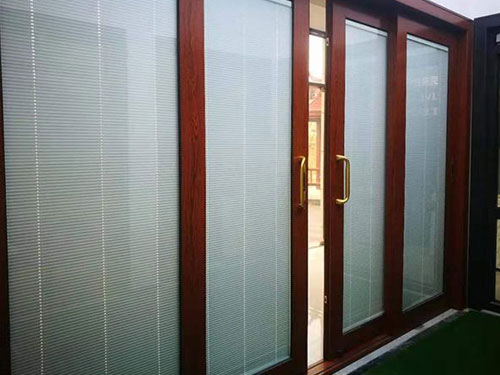
Due to the desiccant that can absorb water molecules inside the insulating glass, the gas is dry. When the temperature decreases, there will be no condensation inside the insulating glass, the dew point on the outer surface of the insulating glass will also increase. For example, when the outdoor wind speed is 5m / s, the indoor temperature is 20 ℃, the relative humidity is 60%, the condensation of 5mm glass starts when the outdoor temperature is 8 ℃, while the condensation of 16mm (5 + 6 + 5) hollow glass starts when the outdoor temperature is - 2 ℃, the condensation of 27mm (5 + 6 + 5 + 6 + 5) three-layer hollow glass starts when the outdoor temperature is - 11 ℃.
There are three ways of energy transfer: radiation transfer, convection transfer conduction transfer.
Radiative transfer
Radiative transfer is the transfer of energy in the form of radiation through rays, including visible, infrared ultraviolet radiation, just like the transfer of sunlight. The reasonable arrangement of the insulating glass the reasonable thickness of the insulating glass can greatly reduce the transmission of energy through the radiation form, thus reducing the loss of energy.
Convective transfer
Convection transfer is due to the temperature difference on both sides of the glass, which causes the air to fall on the cold side rise on the hot side, resulting in the convection of the air the loss of energy. There are several reasons for this phenomenon: first, the poor sealing between the glass the surrounding frame system results in the direct exchange of the gas inside outside the window frame, resulting in the loss of energy; second, the unreasonable design of the internal space structure of the insulating glass results in the convection of the gas inside the insulating glass due to the effect of the temperature difference, which drives the energy exchange, so as to produce Loss of generated energy; third, the temperature difference between the inside outside of the window that constitutes the whole system is large, resulting in a large temperature difference between the inside outside of the insulating glass. With the help of cold radiation heat conduction, air first generates convection on both sides of the insulating glass, then passes through the insulating glass as a whole, forming the loss of energy. The reasonable design of hollow glass can reduce the convection of gas the convection loss of energy.